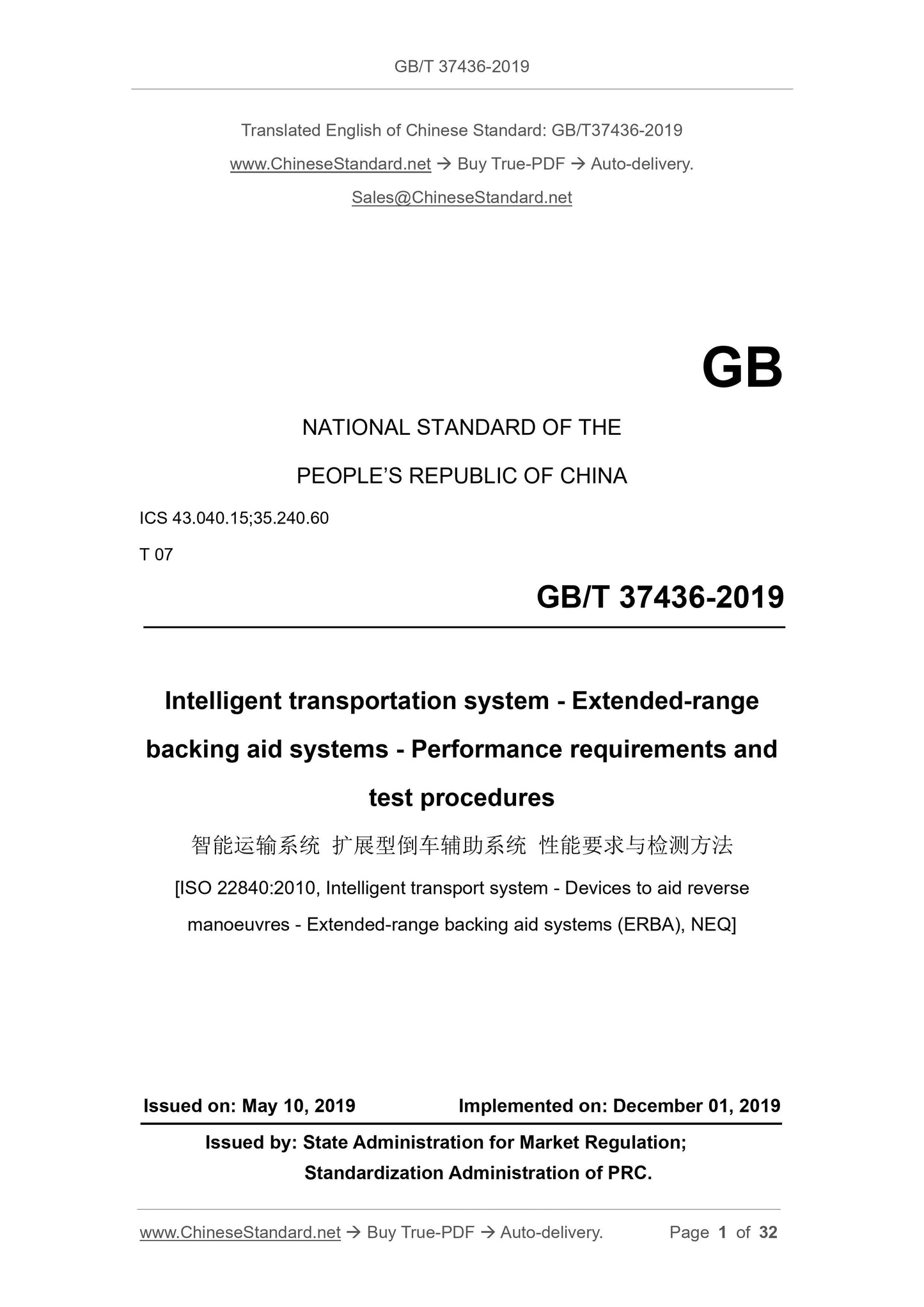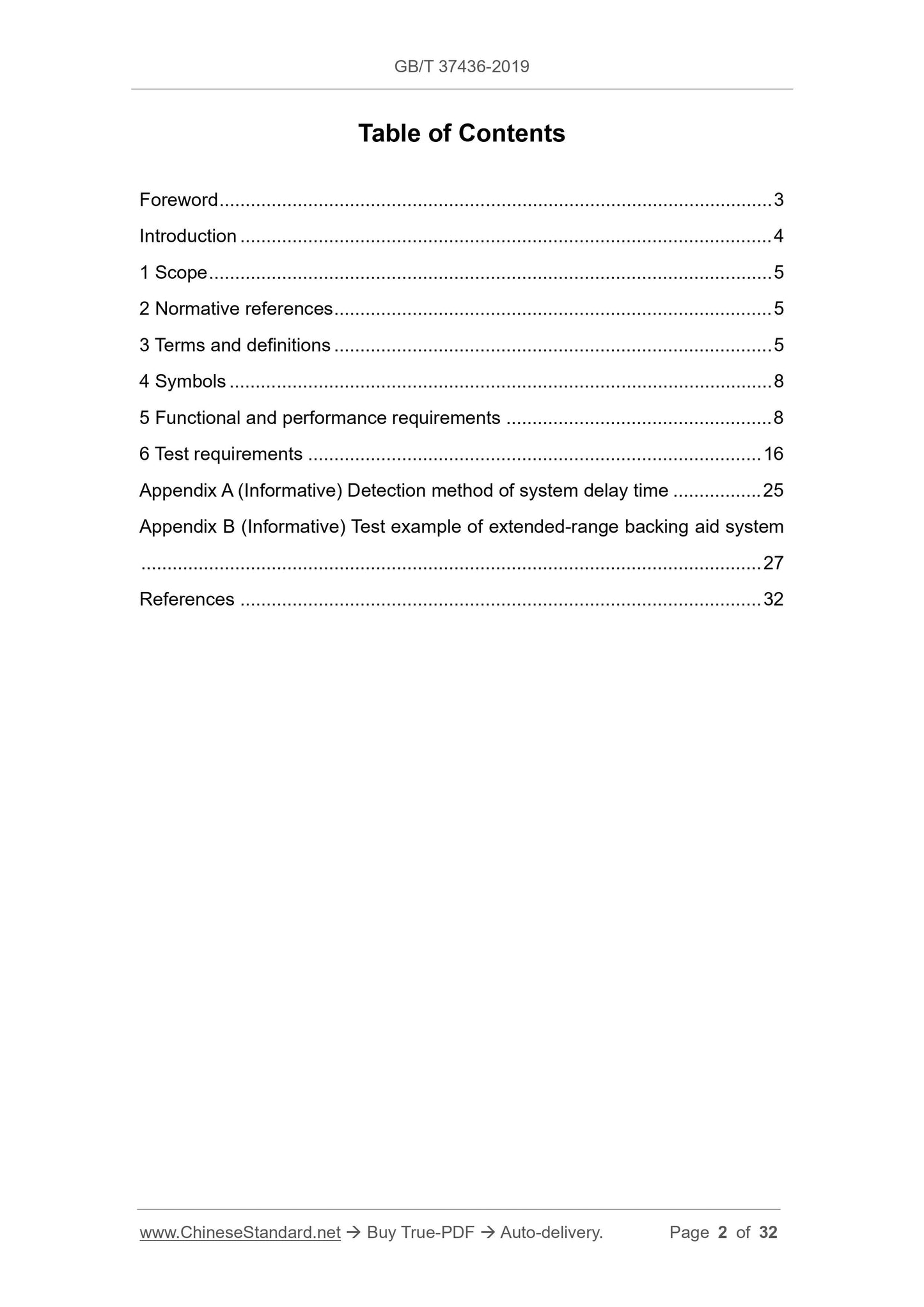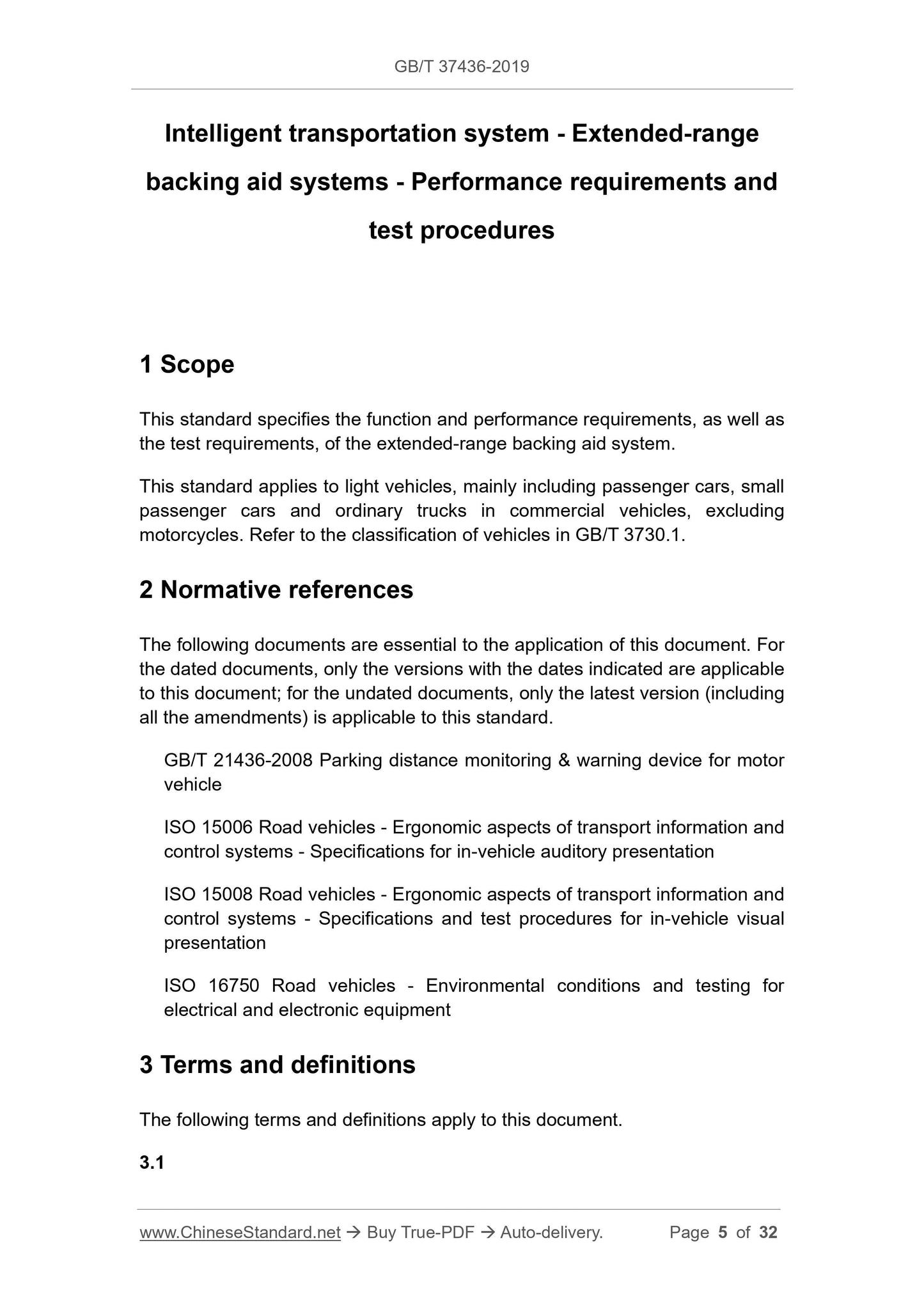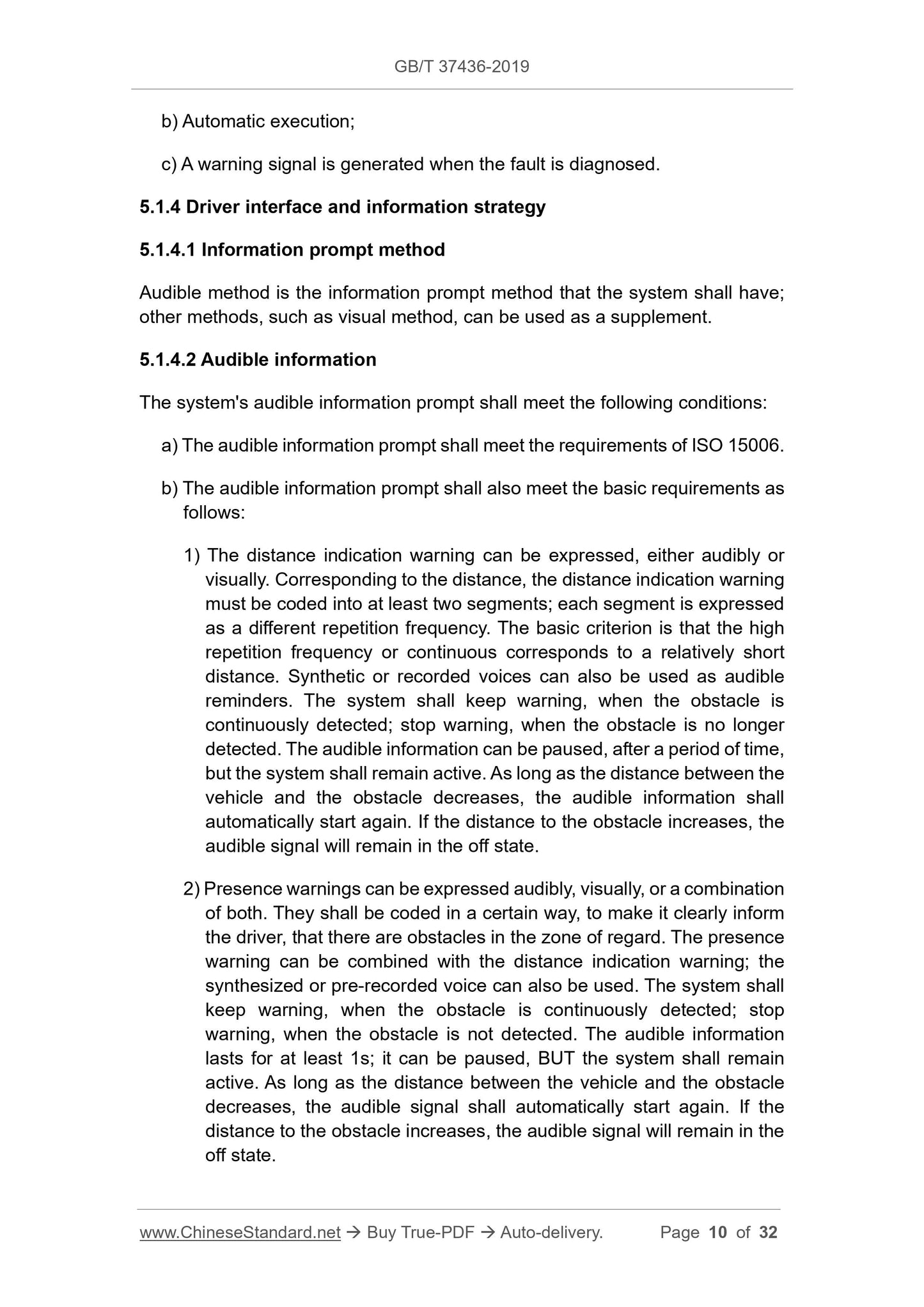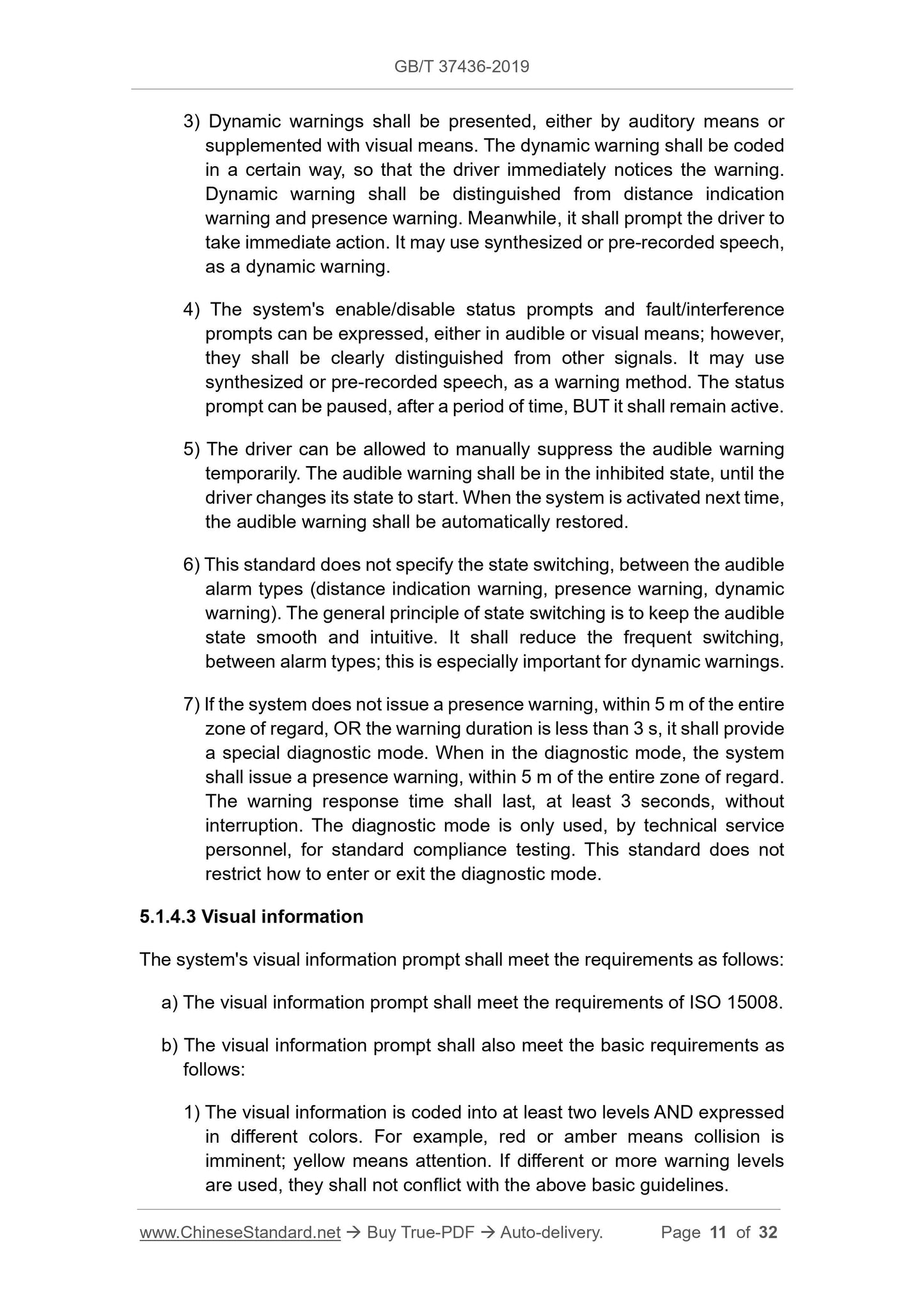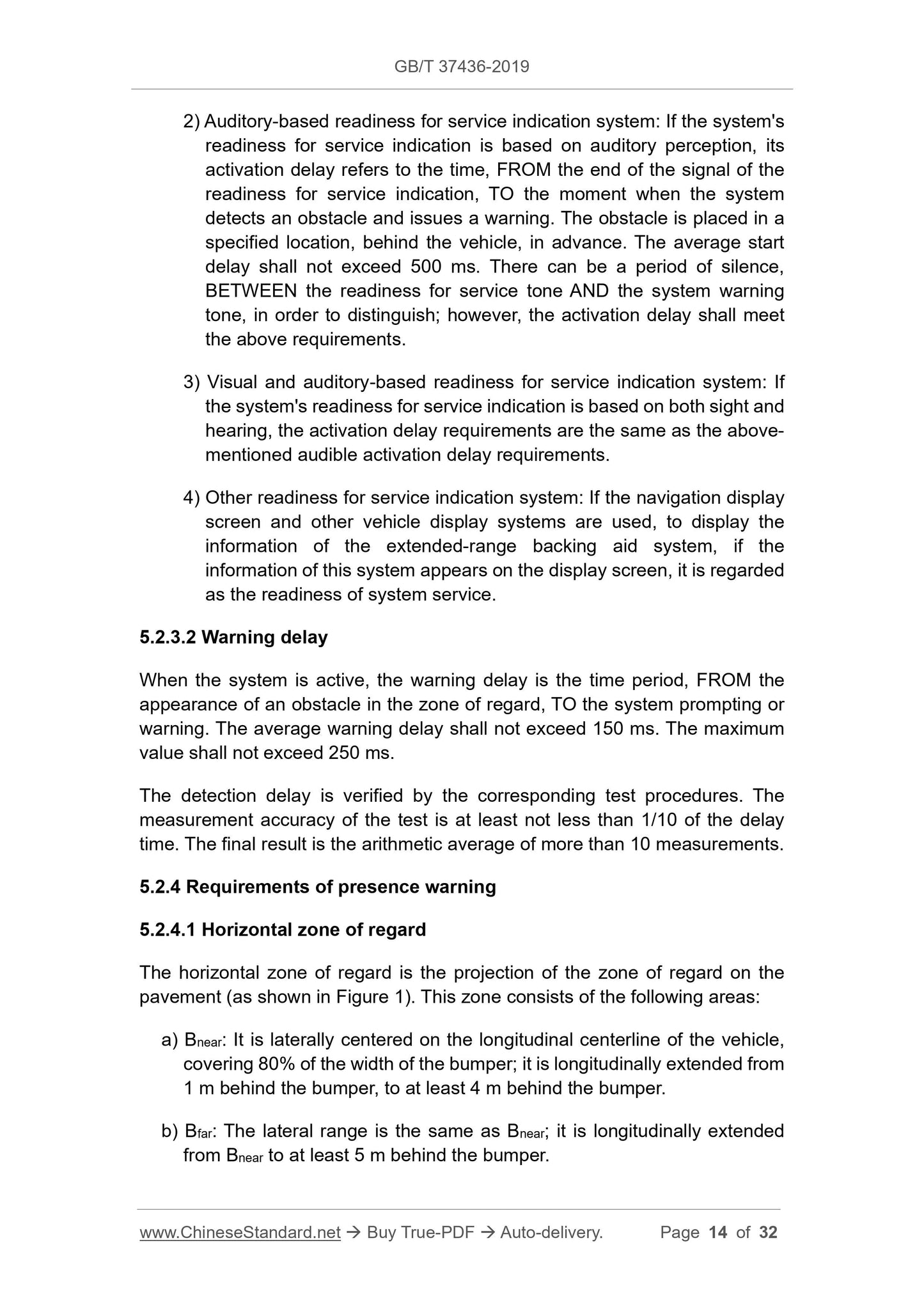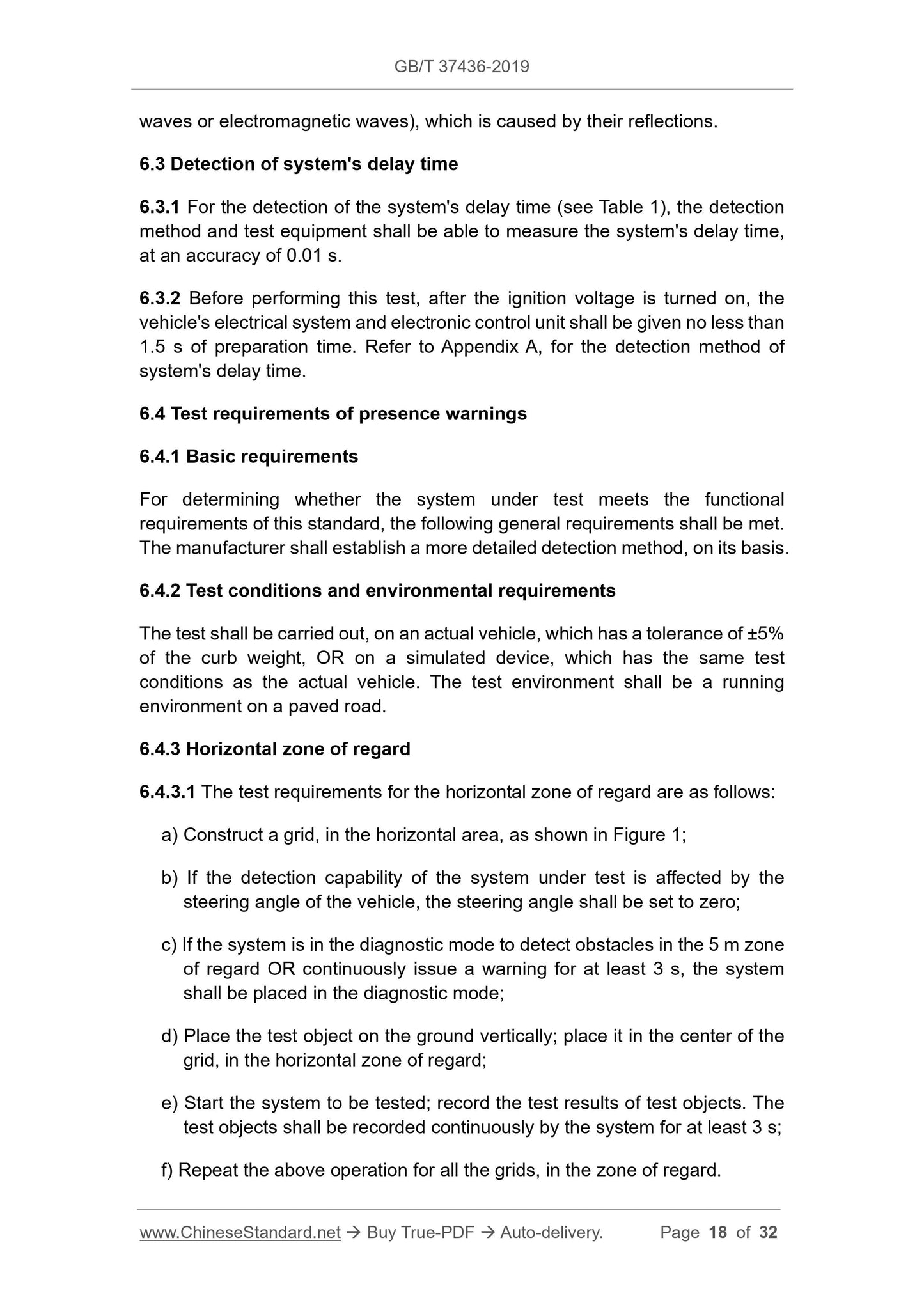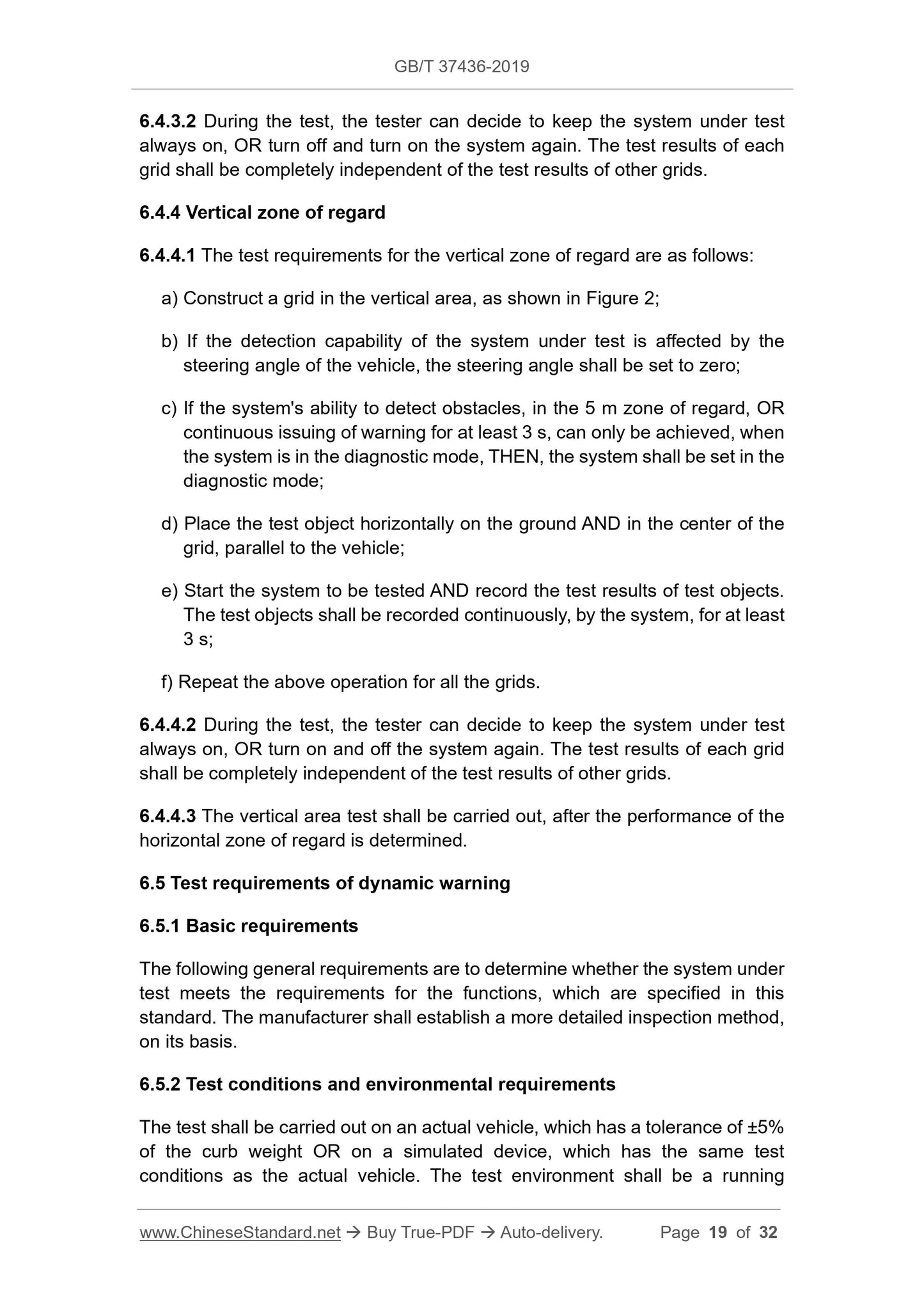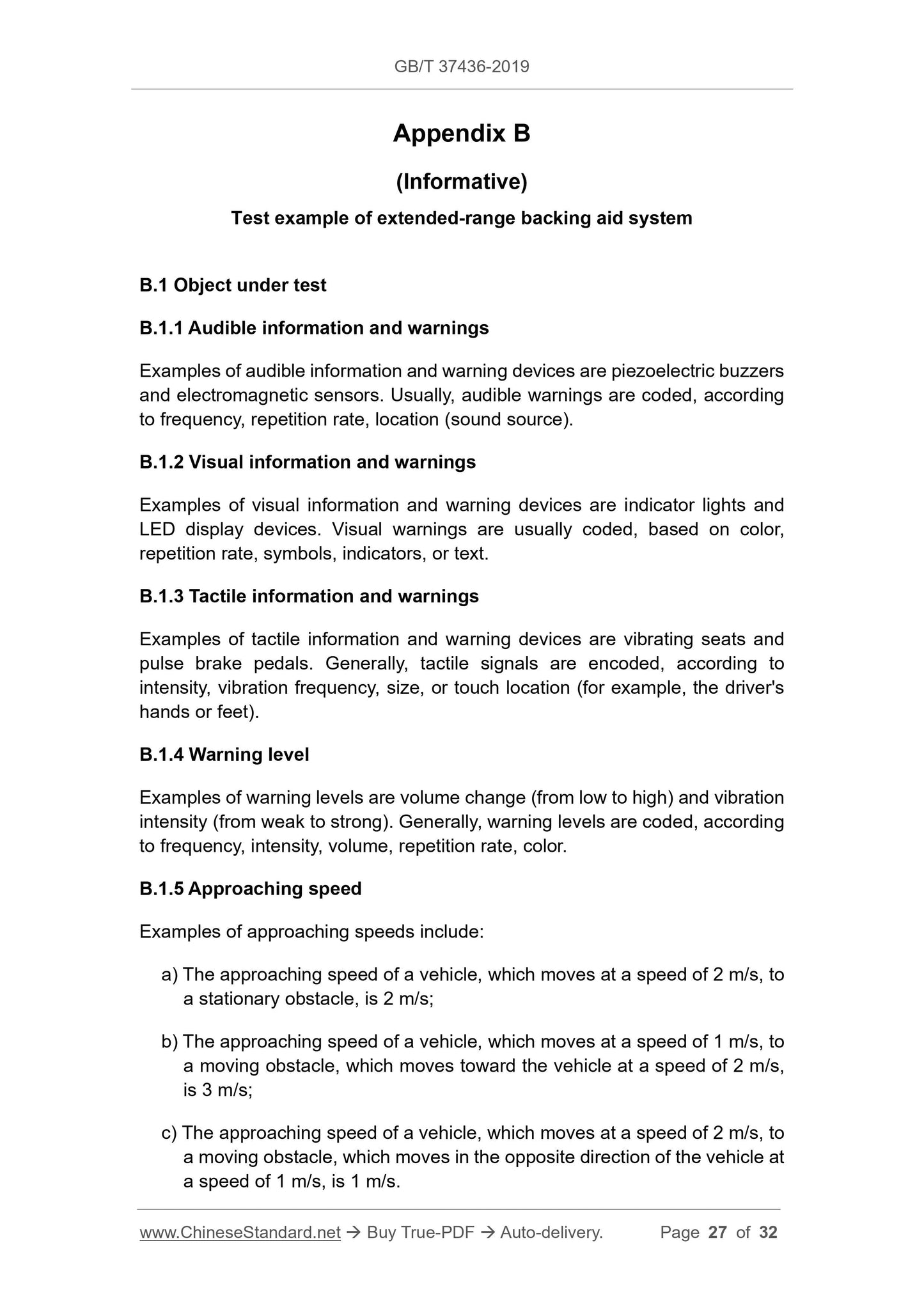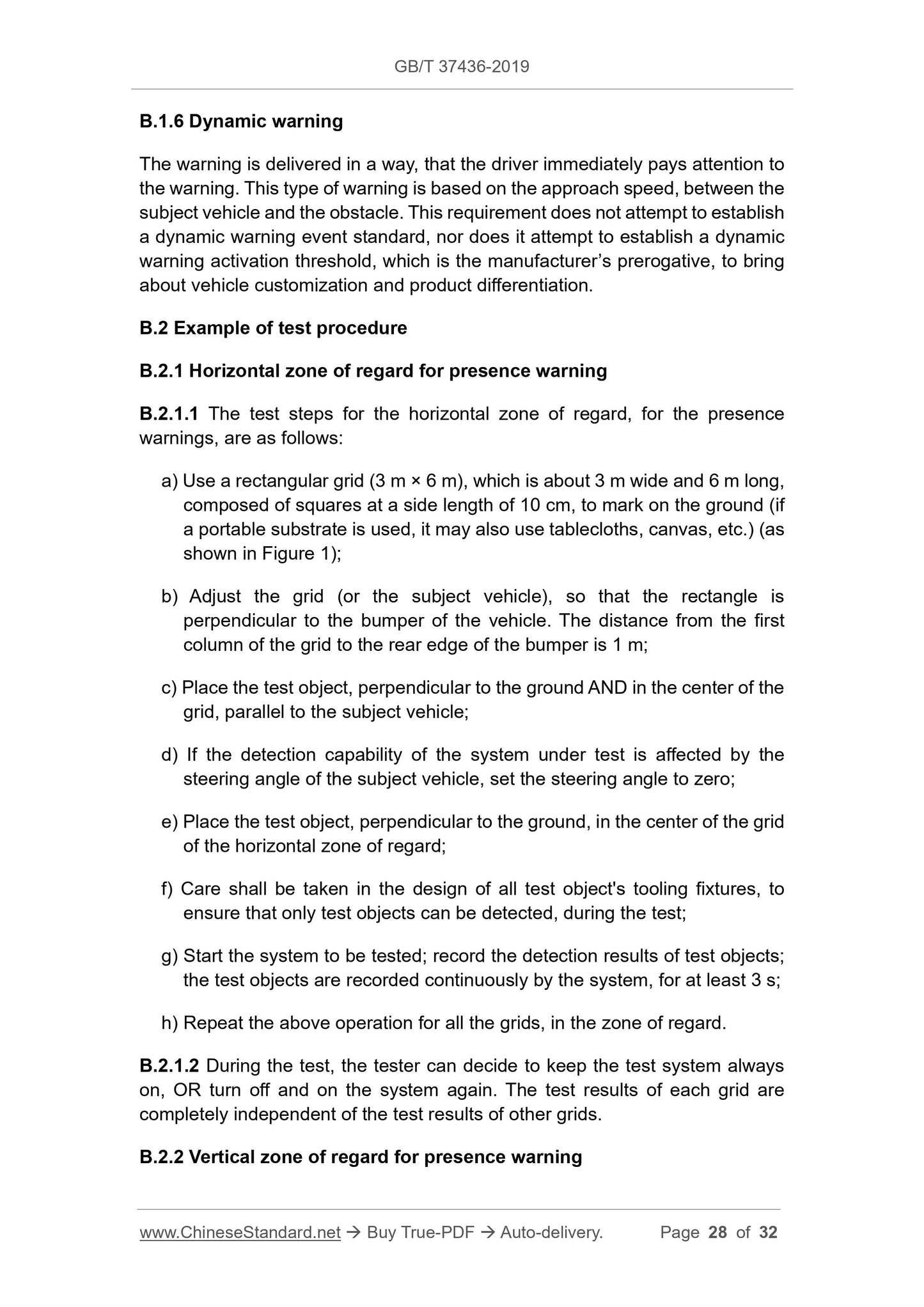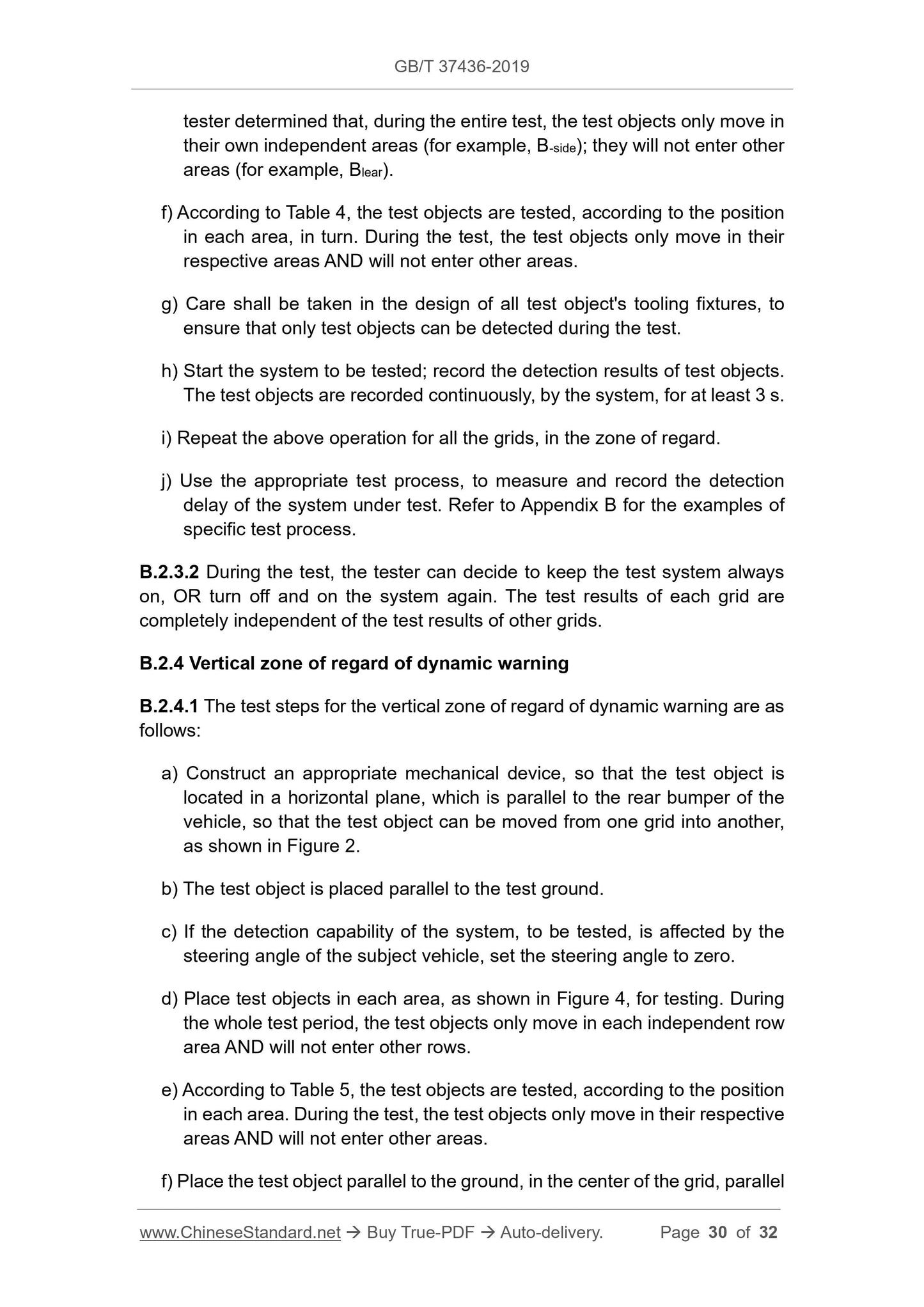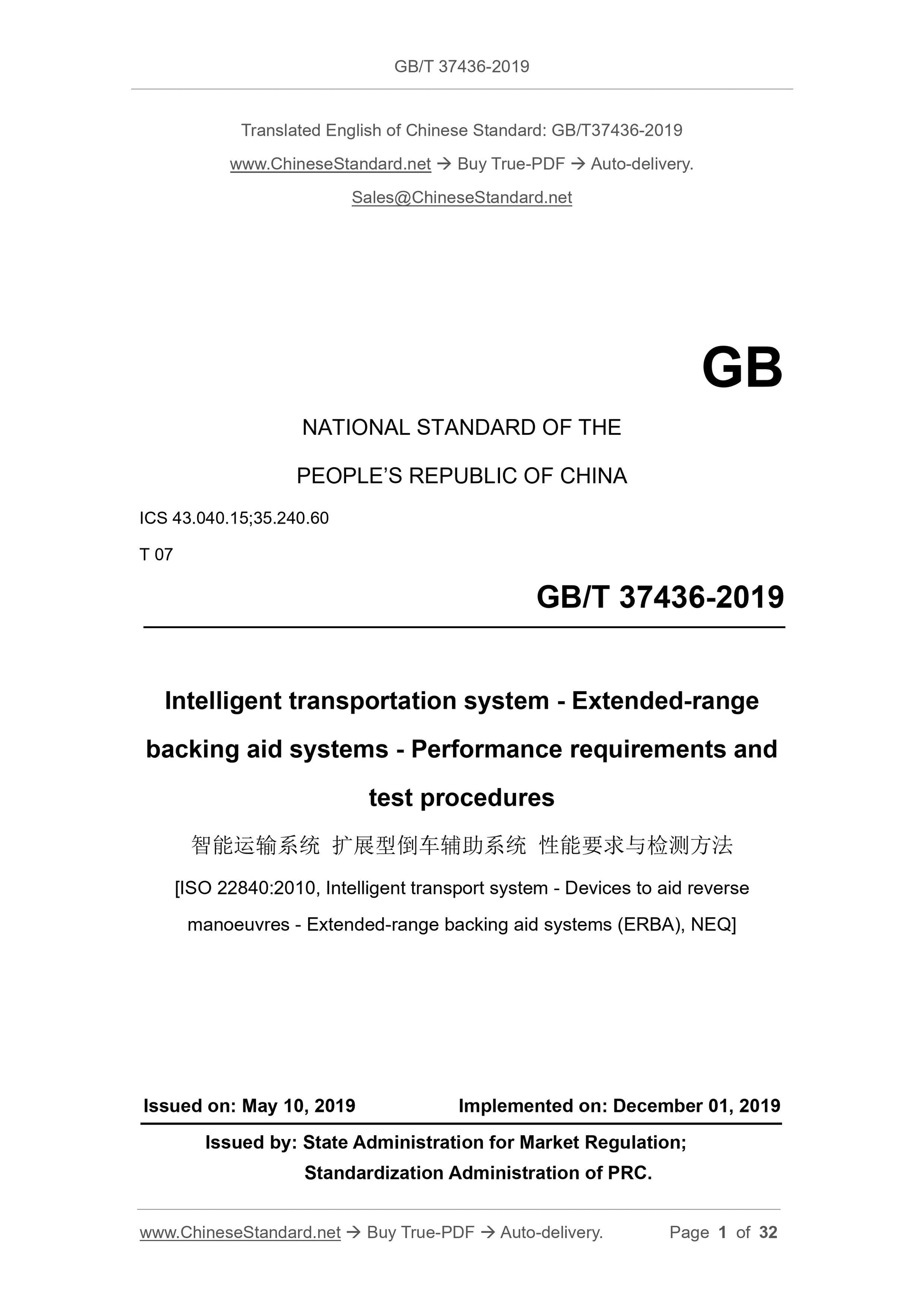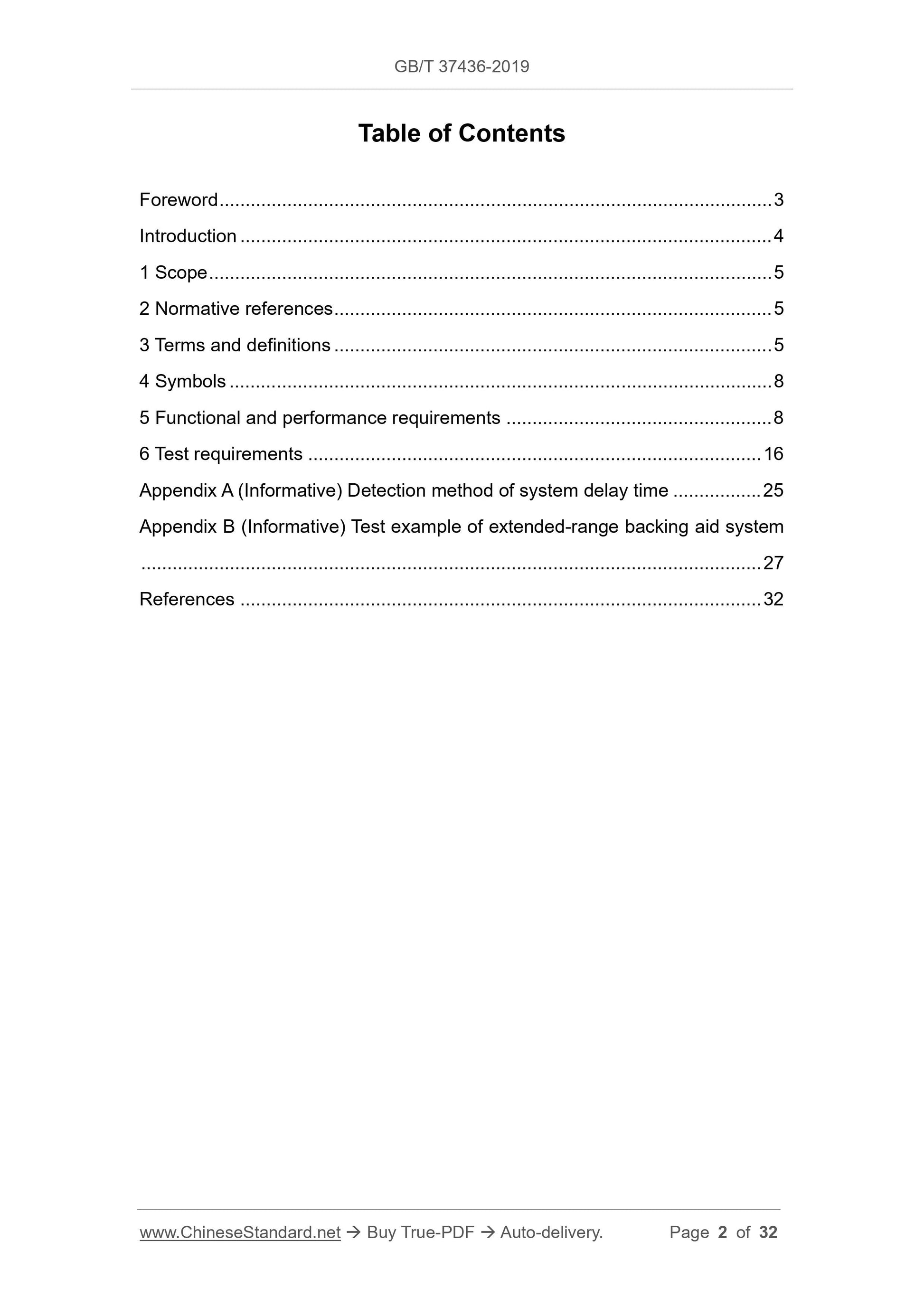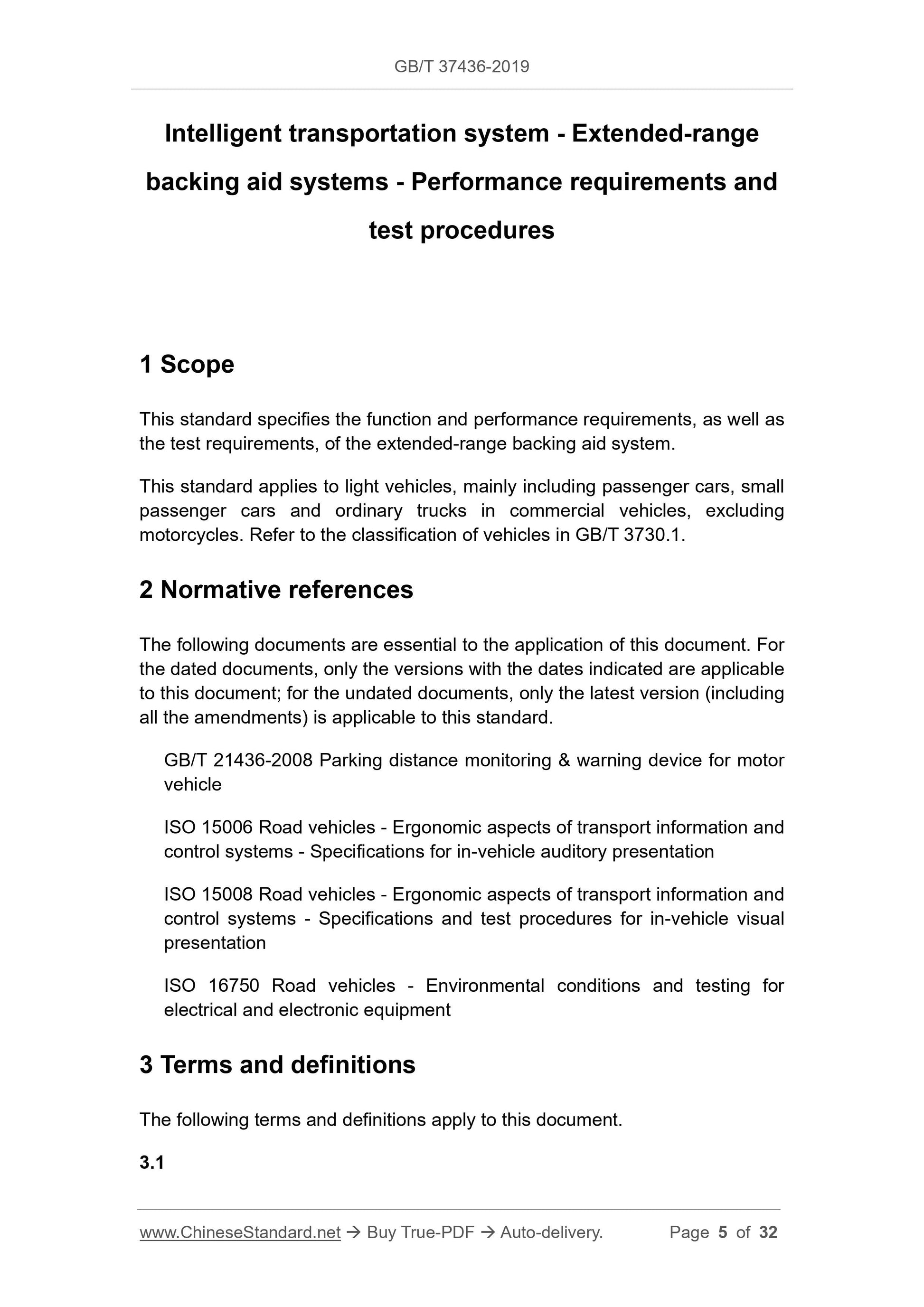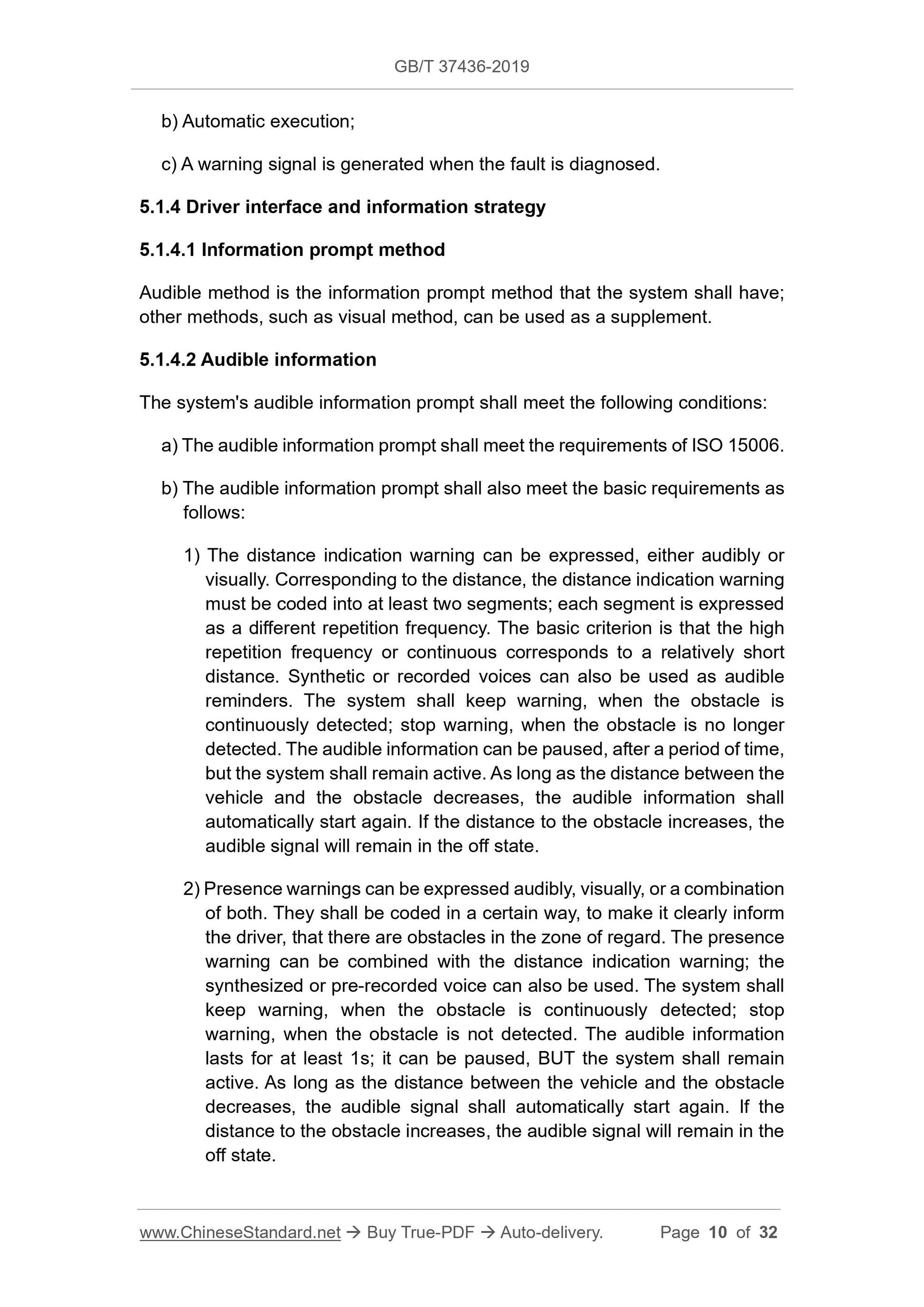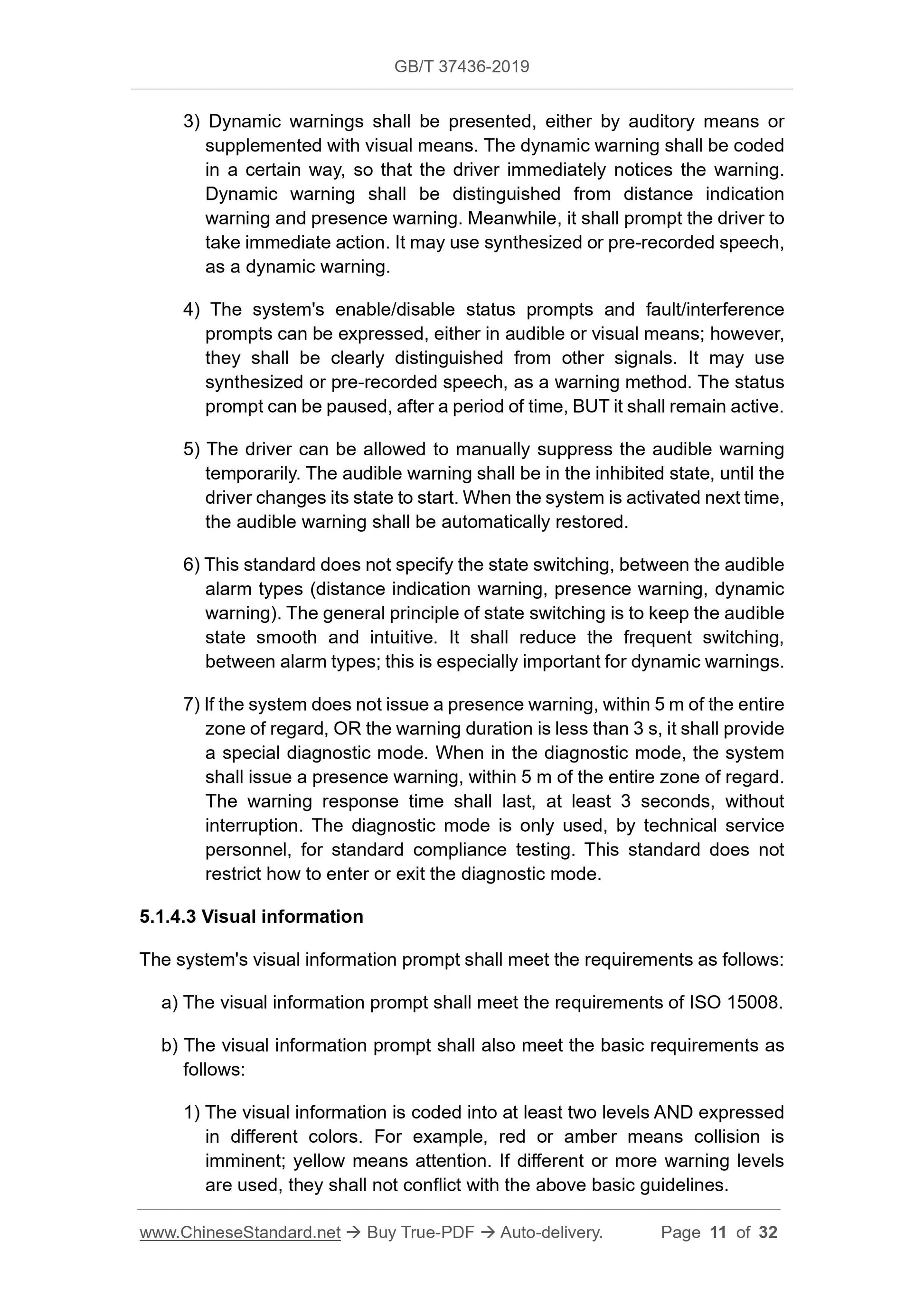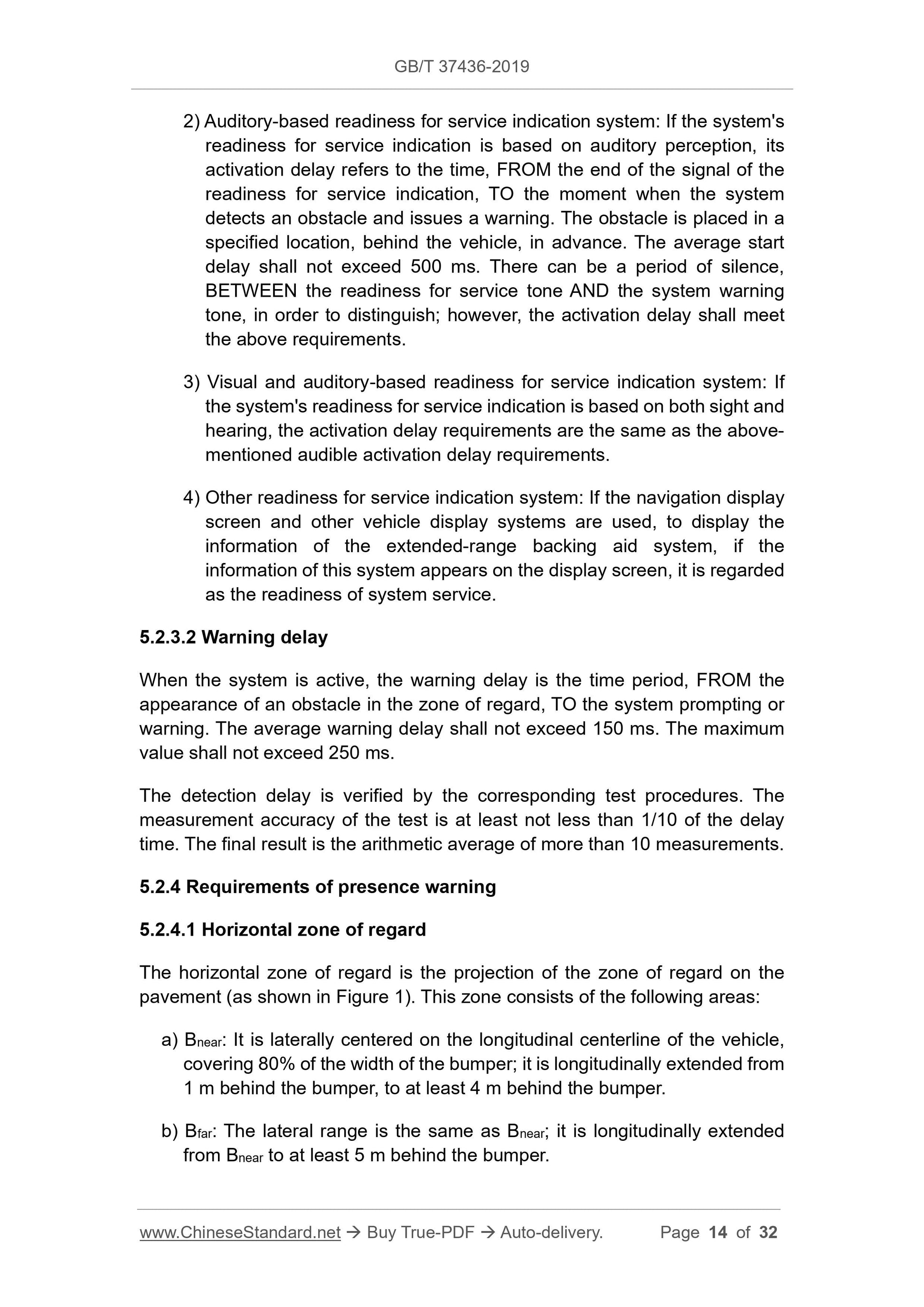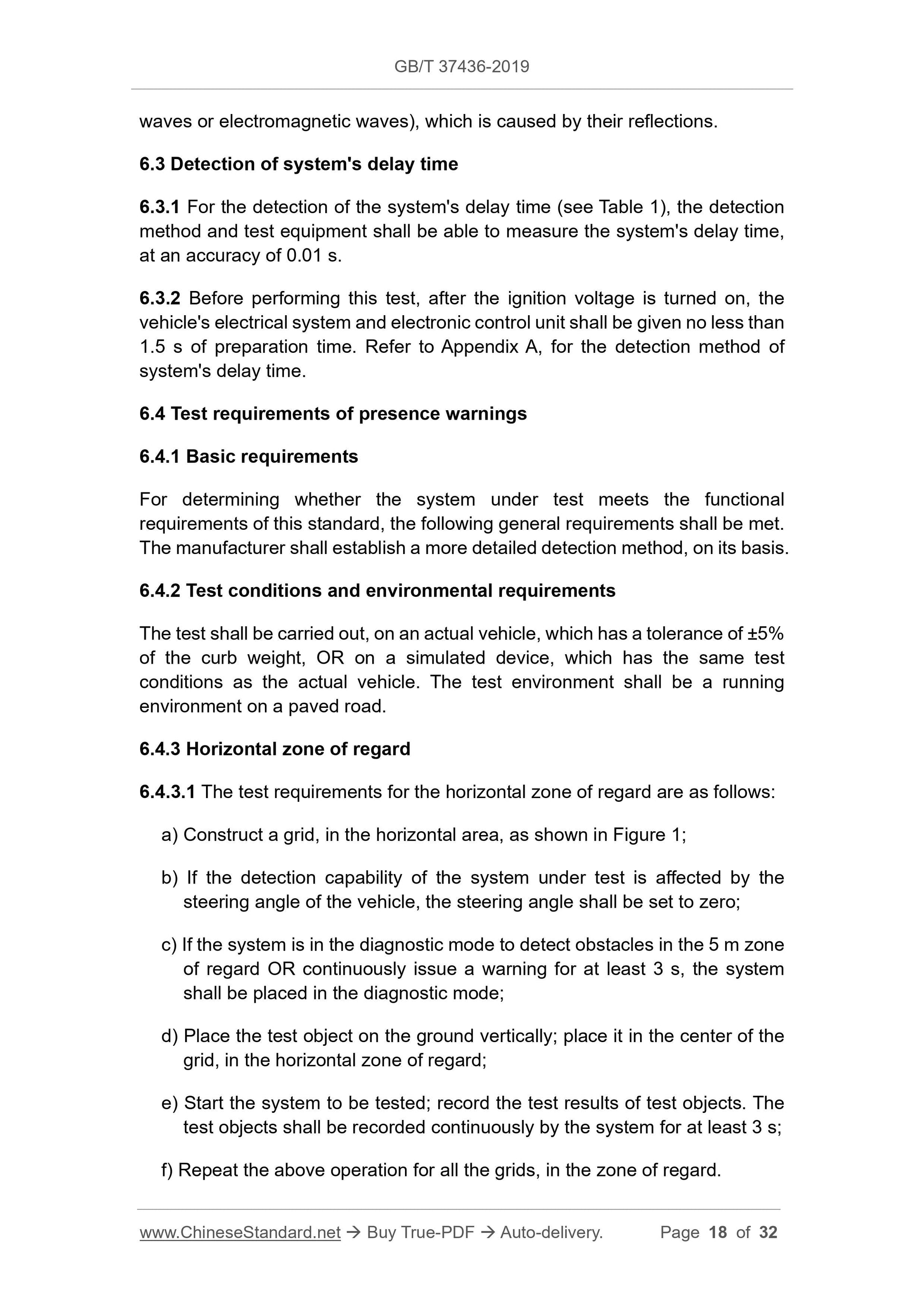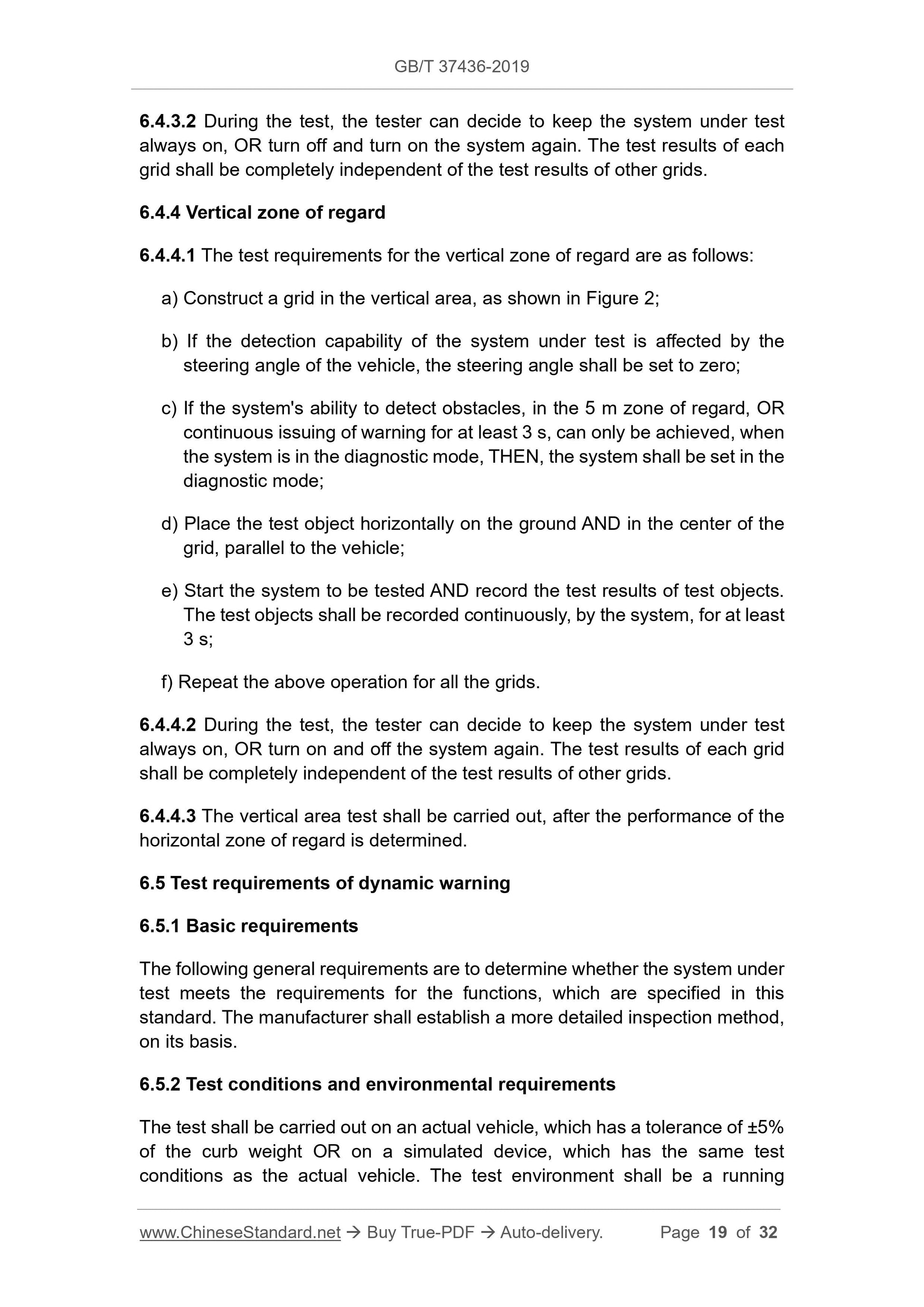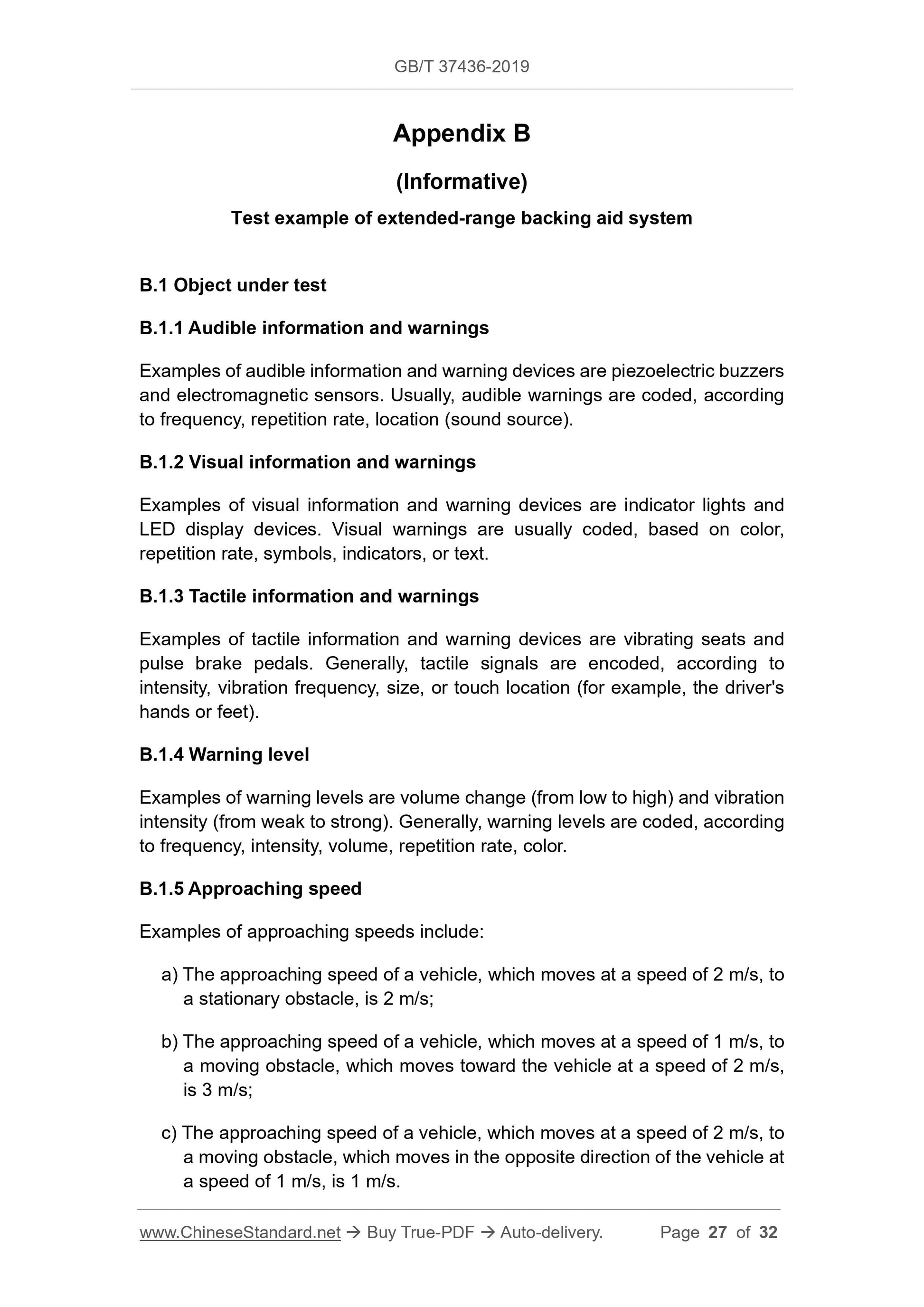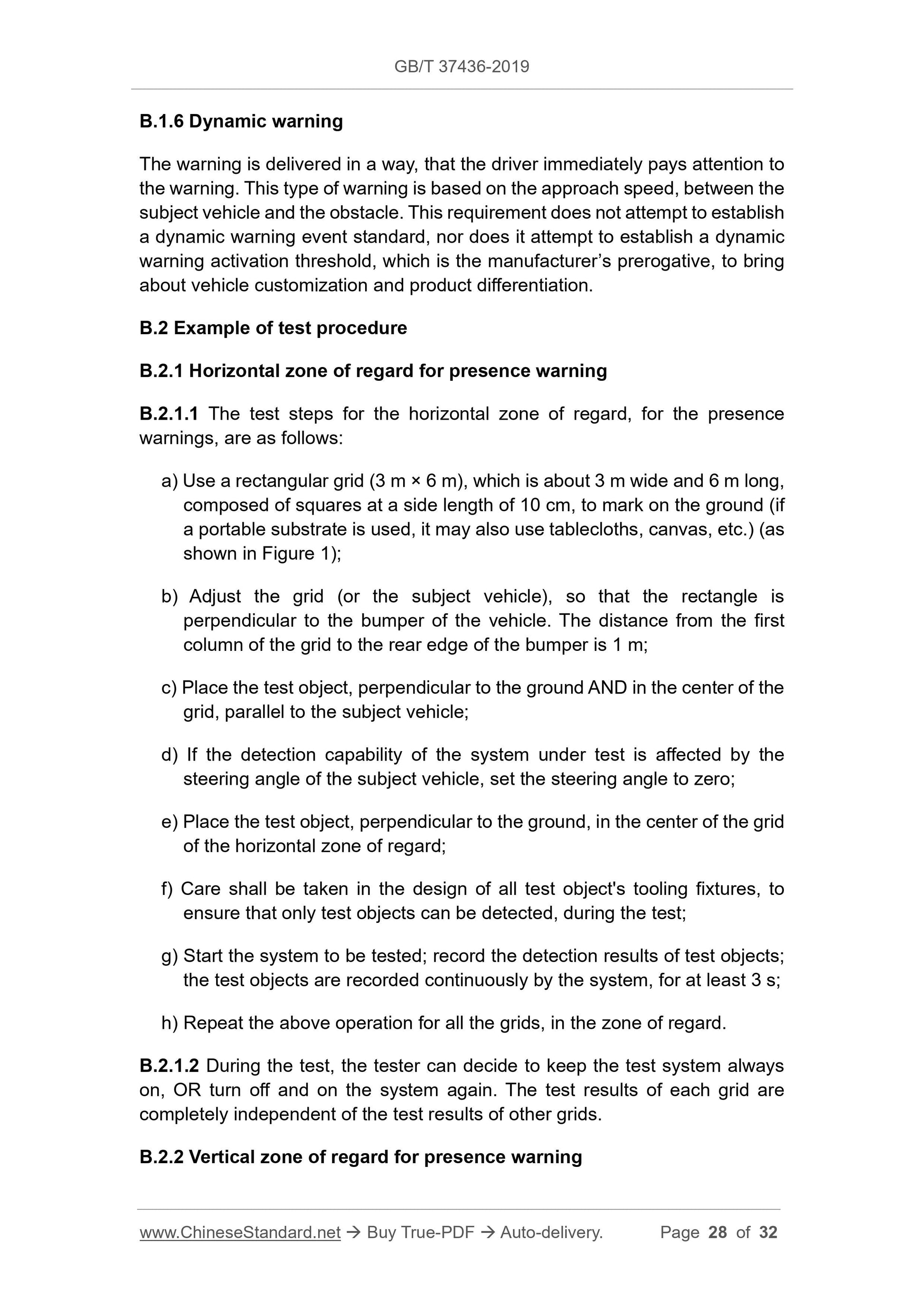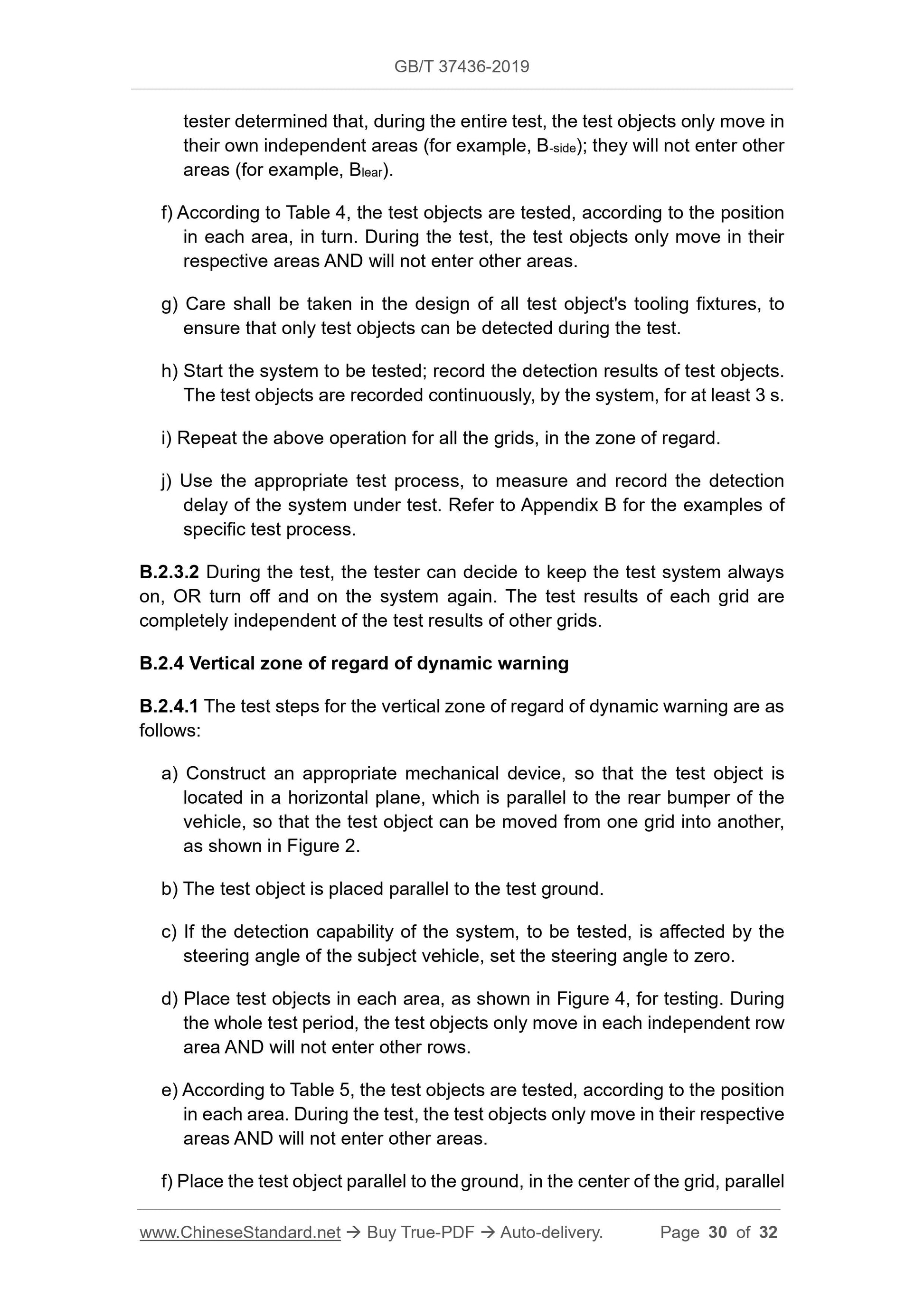1
/
of
11
www.ChineseStandard.us -- Field Test Asia Pte. Ltd.
GB/T 37436-2019 English PDF (GB/T37436-2019)
GB/T 37436-2019 English PDF (GB/T37436-2019)
Regular price
$200.00
Regular price
Sale price
$200.00
Unit price
/
per
Shipping calculated at checkout.
Couldn't load pickup availability
GB/T 37436-2019: Intelligent transportation systems - Extended-range backing aid systems - Performance requirements and test procedures
Delivery: 9 seconds. Download (and Email) true-PDF + Invoice.Get Quotation: Click GB/T 37436-2019 (Self-service in 1-minute)
Newer / historical versions: GB/T 37436-2019
Preview True-PDF
Scope
This standard specifies the function and performance requirements, as well asthe test requirements, of the extended-range backing aid system.
This standard applies to light vehicles, mainly including passenger cars, small
passenger cars and ordinary trucks in commercial vehicles, excluding
motorcycles. Refer to the classification of vehicles in GB/T 3730.1.
Basic Data
| Standard ID | GB/T 37436-2019 (GB/T37436-2019) |
| Description (Translated English) | Intelligent transportation systems - Extended-range backing aid systems - Performance requirements and test procedures |
| Sector / Industry | National Standard (Recommended) |
| Classification of Chinese Standard | T07 |
| Classification of International Standard | 43.040.15; 35.240.60 |
| Word Count Estimation | 22,257 |
| Date of Issue | 2019-05-10 |
| Date of Implementation | 2019-12-01 |
| Quoted Standard | GB/T 21436-2008; ISO 15006; ISO 15008; ISO 16750 |
| Adopted Standard | ISO 22840-2010, NEQ |
| Issuing agency(ies) | State Administration for Market Regulation, China National Standardization Administration |
| Summary | This standard specifies the functional and performance requirements and test requirements for extended back-up assistance systems. This standard is applicable to light-duty vehicles, mainly including passenger cars, small passenger cars and ordinary trucks among commercial vehicles, excluding motorcycles. Refer to the classification of vehicles in GB/T 3730.1. |
Share
